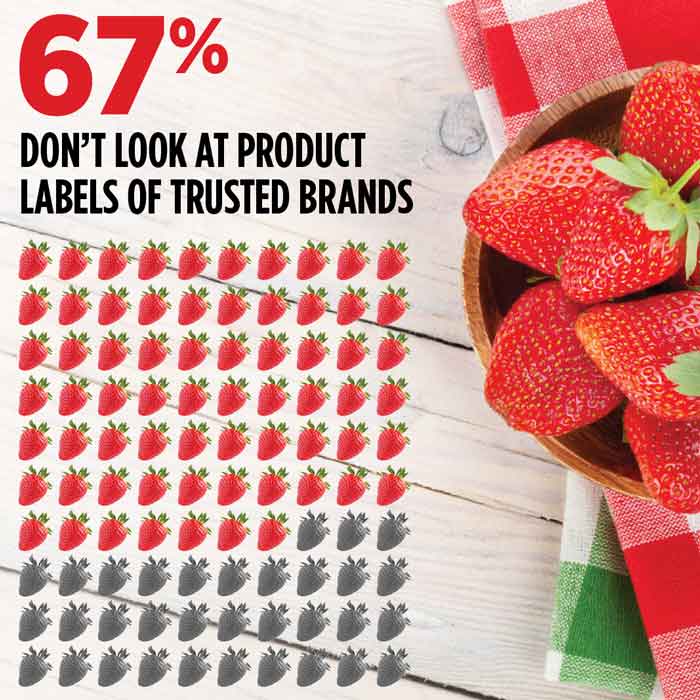
Clean Label Initiatives: Keep It Simple Consumers Approach to Clean Labels
Filed Under: Best Practices, Market Research, Shopper, Food & Beverage, Grocery, Retail
In this rolling series of blog posts, we’ll expose the attitudes and behaviors of four different consumer segments and how brands can work to attract these consumers. We asked consumers to rate their attitudes about food, nutrition and how they make their food choices across many different dimensions. We then statistically analyzed the results using Cluster Analysis to group consumers into segments. Among this national sample of 802 classifieds consumers, we identified the following segments:
- 20% of consumers “Vigilant”
- 15% “Balancers”
- 47% “Keep it Simple”
- 17% “Not Bothered.”

This blog post will focus on the “Keep It Simple” segment (KIS). The KIS consumer constitutes the largest collective mindset in our sample. While not as highly conscious and active in their quest for clean label products as the “Vigilant” consumer, KIS consumers value and want to keep seeing progress in the “cleanliness” of the foods they eat. And, while Vigilant consumers are willing to get into the weeds and do their research on different products and ingredient lists, KIS consumers use a less rigorous process, finding shortcuts to get the information they need while still feeling that they are getting the clean products they desire.
So what are the KIS consumer’s coping mechanisms and how can you make sure you are helping them cope with a sea of product options? Not surprisingly, less is more for consumer with the KIS mindset.
- Ingredient list length: This consumer may not take the time to look for any specific “unclean” ingredient, but they want to see a short, digestible ingredient list with a quick glance.
- What they want to know from the front of the package: A simple “free from,” “natural,” “organic” or “no preservatives” on the front of the package, assures this group without the need to check for verification on the back of the package. Categorizations are easy organizing principles so that this consumer doesn’t have to do all the leg work themselves.
- Simplifying the shopping environment: They’ll choose a retailer, be it a Trader Joe’s, Whole Foods, or Target, where they think they can assume that the work has been done for them to weed out a good portion of products that they don’t want much of in their cart.
- Simplified set of brands they trust and buy: Brands that have earned the trust of KIS consumers do so by having simple ingredient lists, easy to comprehend claims on the front of the package, and a communication strategy with simple and reassuring messaging, helping them make quick, easy and simple buying decisions. And once KIS consumers find brands that they trust, they stay loyal to them.
So what can your brand do to really speak to KIS consumers? Crafting simple messages and claims that help this large group of consumers feel an automatic comfort and ease with your brand is critical. Many manufacturers are taking this approach, and staying ahead of the simplicity curve is critical to make sure this group feels comfortable grabbing your product off the shelf, without a fleeting concern.
explore featured
Case studies
